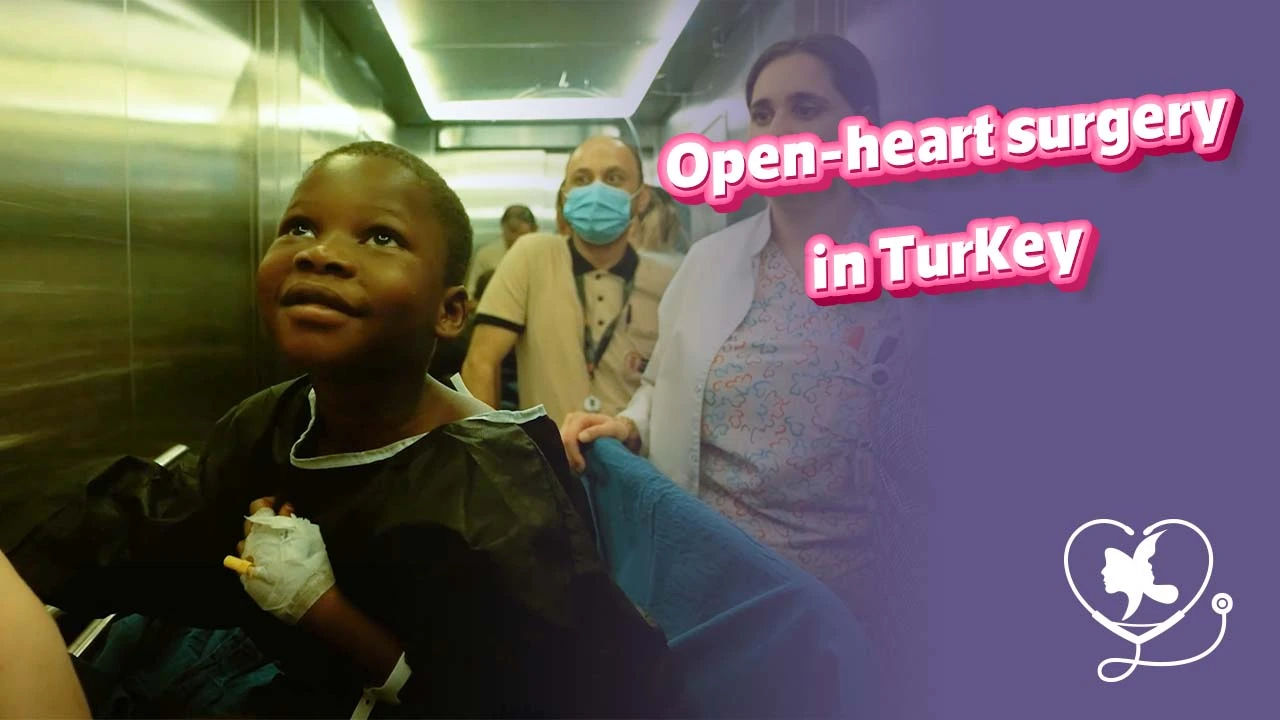- - Deep Brain Stimulation Recovery Timeline
- - Immediate Recovery After DBS
- - Honeymoon Effect After DBS Surgery
- - Long-Term Adjustment and Lifestyle After DBS Surgery
- - Improvement After DBS Surgery
- - Initial DBS Device Programming
- - Ongoing DBS Adjustments and Reprogramming Sessions
- - Medication Adjustments After DBS Treatment
- - Patient Follow-Up and DBS Device Maintenance
- - DBS Battery Replacement Surgery
- - Potential Complications After DBS Surgery
- - How Long Does Deep Brain Stimulation Last?
- - Life Expectancy After DBS Surgery
- - FAQs About Life After DBS Surgery
Deep Brain Stimulation (DBS) has become one of the most effective treatments for several neurological conditions, including Parkinson’s disease, epilepsy, OCD, and essential tremor. With a success rate exceeding 95%, DBS is recognized worldwide, especially for patients whose symptoms are resistant to medication, like DBS for Parkinson's.
At Turkey Luxury Clinics, we guide you through what to expect after DBS surgery. Life after DBS surgery involves an initial recovery period, followed by a long-term adjustment and fine-tuning phase, during which many patients experience significant improvements in daily functioning and quality of life.
Explore all the details and gain a clear understanding of how DBS can transform your life, helping you take the first step toward greater independence and well-being.
Deep Brain Stimulation Recovery Timeline
Immediate Recovery After DBS
In the days following Deep Brain Stimulation (DBS) surgery, patients typically stay in the hospital for a few days for monitoring. During this time, mild pain, swelling, or bruising around the incision sites is normal.
1. Rest and limited activity:
Rest is crucial during the first four to six weeks. Patients should avoid strenuous activities, including lifting heavy objects (over 20 pounds), pushing, or pulling. Allowing the body to heal without physical stress helps protect the surgical sites, reduces the risk of wound complications, and lowers the chance of lead displacement or hardware-related issues.
2. Pain management:
DBS surgery is generally not painful, but mild soreness in the head or chest is common. Postoperative discomfort is usually managed with light oral analgesics as directed by the surgeon.
3. Wound care:
Incision sites require careful attention to prevent infection. Keeping the surgical wounds clean and dry, as instructed by your doctor, supports safe and proper healing.
4. Tingling or pulling sensations:
Patients may experience tingling or a pulling sensation after DBS and during the initial device programming sessions. This is normal and usually temporary as the body adjusts to stimulation. Tingling often disappears once the settings are fine-tuned.
Honeymoon Effect After DBS Surgery
Immediately after surgery, some patients experience a temporary improvement in symptoms, known as the "microlesion" or "honeymoon" effect. This occurs due to the insertion of the leads and typically lasts a few days to weeks.
Symptoms usually return to pre-surgery levels once this effect wears off, before the stimulator is activated. True improvement after Deep Brain Stimulation (DBS) surgery is a gradual process that unfolds over several weeks to months as the device is programmed and medications are adjusted. Full benefits may take up to a year to be fully realized.
Long-Term Adjustment and Lifestyle After DBS Surgery
.
1. Return to work and daily activities: Many patients can return to work within one to two weeks, depending on their recovery progress and the physical demands of their job.
2. Increased independence: As symptoms become better controlled, patients often regain independence in daily tasks such as eating, dressing, and writing.
3. Emotional and social benefits: Improved motor function can support emotional well-being, reduce anxiety, and boost confidence, making social interactions easier and more fulfilling.
4. Driving and travel: Driving can usually resume once the physician confirms it is safe. Air travel is generally postponed for at least six weeks to ensure proper healing after surgery.
5. DBS device maintenance: Maintenance depends on the type of battery. Rechargeable devices require regular charging, while non-rechargeable batteries typically need minor surgical replacement every three to five years.
Improvement After DBS Surgery
Patients often experience a wide range of benefits after DBS, depending on the condition being treated. Common functional improvements include:
- Reduced tremors: One of the most consistent outcomes, especially for essential tremor and Parkinson’s disease, with many patients regaining steady hand control.
- Less rigidity and stiffness: DBS helps smooth out muscle tone, making everyday movements easier and more fluid.
- Decrease in dyskinesia: Many patients experience fewer involuntary movements and more stable “on” time during the day.
- Improved upper-limb function after stroke: Some stroke survivors treated with DBS show better arm and hand control as therapy progresses.
- Enhanced responsiveness in disorders of consciousness: In select cases, DBS may help improve alertness and interaction with the environment.
- More symptom-free time: Over time, patients often enjoy longer periods where symptoms are minimal or well-controlled.
Initial DBS Device Programming
Deep Brain Stimulation (DBS) device programming is the process of adjusting the electrical signals sent by the surgically implanted stimulator to effectively manage a patient’s symptoms. DBS programming starts 2 to 6 weeks after surgery, once the swelling around the electrodes has settled.
Using a handheld programmer, similar to a remote control, your doctor fine-tunes the stimulation by adjusting settings such as amplitude, frequency, and pulse width. This process also includes checking the hardware, testing different parameters, and sometimes adjusting medications. The goal of this session is to find a balance where symptoms begin to improve without causing unwanted side effects.
Each patient responds differently, so DBS programming requires multiple sessions over several weeks or months. This gradual approach lets your doctor adjust settings based on how your body reacts, ensuring the therapy works best for your daily needs.
Ongoing DBS Adjustments and Reprogramming Sessions
Ongoing DBS adjustments are an essential long-term part of treatment. They begin with frequent programming sessions that gradually become less frequent over time, followed by periodic follow-ups to fine-tune settings, manage symptoms, and check the device.
Most patients require several visits during the first 3 to 12 months to reach the optimal settings. After that, they typically need only annual check-ins. These sessions play a key role in refining the electrical impulses, managing side effects, and ensuring the therapy remains effective for the individual.
Medication Adjustments After DBS Treatment
The goal of medication adjustment after Deep Brain Stimulation (DBS) surgery is to reduce side effects such as dyskinesia or medication-related fluctuations without compromising symptom control. Adjusting medication after DBS is a gradual and carefully monitored process.
- In the early phase, doctors usually avoid changing the medication schedule until the first programming session is completed, because some patients experience the short-lived “honeymoon effect” that temporarily improves symptoms before the stimulator is activated.
- Once the device is programmed and the patient responds to stimulation, medication adjustments start slowly. Doctors typically begin by reducing older medications like amantadine or MAO-B inhibitors before making changes to levodopa or dopamine agonists, since these remain essential for many patients even after DBS.
- Medication changes are rarely done all at once. Instead, the team adjusts dosages step by step, monitoring how the patient feels at different times of the day and how the new DBS settings interact with the medication profile.
Medication adjustments after DBS vary per patient, take time, and often involve trial and error. Close follow-up with your neurologist during the first months ensures optimal symptom control and prevents under- or over-treatment.
Patient Follow-Up and DBS Device Maintenance
1. Regular check-ups: Your doctor will monitor the battery level and overall device performance during routine visits, usually every 6 to 12 months. Many modern systems also give an early warning when the battery starts to run low.
2. Patient checks: Patients are encouraged to check the battery status every 3 to 6 months using their handheld programmer. This helps prevent unexpected shutdowns and allows enough time to schedule a replacement.
3. Avoid strong magnets and EMI: Stay clear of strong magnets and devices that produce significant electromagnetic interference (EMI), such as industrial transmitters, arc welders, or some high-power wireless chargers.
4. Watch your symptoms: A gradual return of symptoms may signal that the battery is weakening. In Parkinson’s disease, symptoms can come back quickly, so contact your doctor right away if tremor, stiffness, or slowness begin to worsen.
5. Carry your ID: When traveling or going through airport security, keep your DBS ID card with you and inform the security staff about your implanted device.
DBS Battery Replacement Surgery
DBS battery replacement involves a surgical procedure. The procedure is usually shorter and less invasive than the initial surgery to implant the system. It was replaced in a quick outpatient surgical procedure where:
the old battery is removed, and a new one is implanted in the same location
- A surgeon makes an incision in the skin, often in the same area as the original battery.
- The old battery (neurostimulator) is removed.
- The wires (leads) that go to the brain are disconnected from the old battery and then reconnected to the new one.
- The new battery is placed in the same pocket under the skin.
How often does the DBS battery need to be replaced?
The frequency of a Deep Brain Stimulation (DBS) battery replacement depends on the type of battery (non-rechargeable or rechargeable) and individual stimulation settings.
- Non-rechargeable batteries: Typically last 3 to 5 years and require a surgical procedure to replace the neurostimulator. The old battery is replaced with a new one in a short procedure, often lasting less than an hour, and patients can go home the same day.
- Rechargeable batteries: Can last up to 15 years but need to be recharged regularly by the patient. This reduces the frequency of replacement surgeries, but requires consistent charging.
Potential Complications After DBS Surgery
Some risks and complications can occur after DBS, either due to surgical and hardware complications
- Infection: Can occur at the incision sites or around the implanted hardware. This can sometimes require the removal of the entire system.
- Bleeding: Intracerebral hemorrhage (bleeding in the brain) is a risk, though serious complications are rare.
- Stroke: A potential complication, sometimes related to bleeding or other neurological issues.
- Hardware malfunction: The implanted hardware can break or move, requiring revision surgery. This includes lead fracture, extension wire failure, or internal pulse generator (IPG) malfunction.
- Accidental damage: The lead may not be placed accurately, or a cyst may form at the tip of the lead.
How Long Does Deep Brain Stimulation Last?
DBS is a long-term therapy that can provide benefits for many years. The implanted device typically lasts 3–5 years with non-rechargeable batteries, or up to 15 years with rechargeable ones. Regular follow-ups and adjustments help maintain optimal symptom control. However, DBS is not a cure; it manages symptoms while the underlying condition, such as Parkinson’s disease, continues to progress. Proper care and ongoing therapy can ensure sustained improvements in movement, mood, and daily functioning.
Life Expectancy After DBS Surgery
Studies show that patients undergoing DBS surgery have high survival rates: approximately 98.4% at 1 year, 96.8% at 3 years, 89.8% at 5 years, and 69.2% at 10 years. These numbers reflect outcomes for patients with conditions treated by DBS, highlighting its safety and long-term benefits.
You may like:
ICD-10 Parkinson’s: All G20, G21, G22 & F Codes with Updates
Deep Brain Stimulation Cost 2025: Save 60% on DBS Surgery









.webp)
.webp)
.webp)
.webp)

